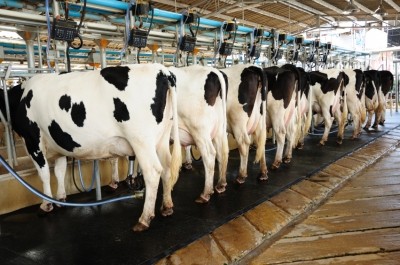New feed assessment tool focused on NSPs

The web-based feed assessment tool, iNSPect, was launched earlier this month at the World Pork Expo, said Rob Patterson, technical director with Canadian Bio-systems. It was designed to give producers a better understanding of the amount and types of non-starch polysaccharides (NSP) that could be present in their feeds.
“When you build enzymes you target them to a substrate,” he told FeedNavigator. “But it was hard for customers to visualize."
The new tool also allows for a comparison of different enzyme technologies.
“No one has ever looked at it this way before,” he claimed. “People had looked at it as a crude fiber number, they haven’t looked at it as NSP or the subtypes of NSP as part of the whole.”
Turning ‘wheat into corn’
Users can input a trial diet from the available feed ingredients and specify what percentage of a ration that ingredient would be, the company said. The program then calculates what percentage of the diet is the total NSP and splits it into different polysaccharides including arabinose, xylose, mannose, galactose, cellulose and B-glucans and pectins.
NSPs may range from 9 to 15% of a diet and they are only slightly digestible, said Patterson. However, they can be broken down into more digestible matter if the correct enzymes are added.
“You can either set your enzyme and understand what your NSP level is and hope to increase the digestibility as much you can, or use the enzyme [to increase] the non-starch polysaccharides in the ration,” he said. Increasing the NSP to be addressed through enzyme use may mean being able to feed a lower cost diet and achieve the same performance, he added.
“With a really good enzyme you can turn barley into wheat, and wheat into corn,” he said. “You do that by targeting all the NSP components.”
Tool use and specifics
The assessment tool grew out of an ingredient database that Canadian Bio-Systems established over time, said Patterson. It was designed to be run online, so while it can be accessed from a mobile phone, tablet or computer a user doesn’t need to download a program.
“It was really based on a concept of a ration balance software,” he said. “You put in your corn, and soy, and distillers grains and everything else and then it calculates how much non-starch polysaccharides are in that diet. And you use that as a tool to decide what enzyme you need and what’s missing.”
The program was designed to work on a global scale, he said. In addition to providing information on feed ingredients like corn, soybean meal and canola, the table includes ingredients less common for North America producers like copra meal, rice, cassava and banana meal.
The company has been working on the information for the global database for several years, said Patterson. “It moves out of the Midwest feed industry to other spots, so we have wheat, and barley and faba beans as you move further away from the corn,” he added.
However, the database is predominately intended to be used with monogastric animals as it does not offer information on silages, he said. However, that information may be included in future updates to the tool.
The company is currently waiting on feedback on the current system, which is the second version, before the next version is released, he said.












